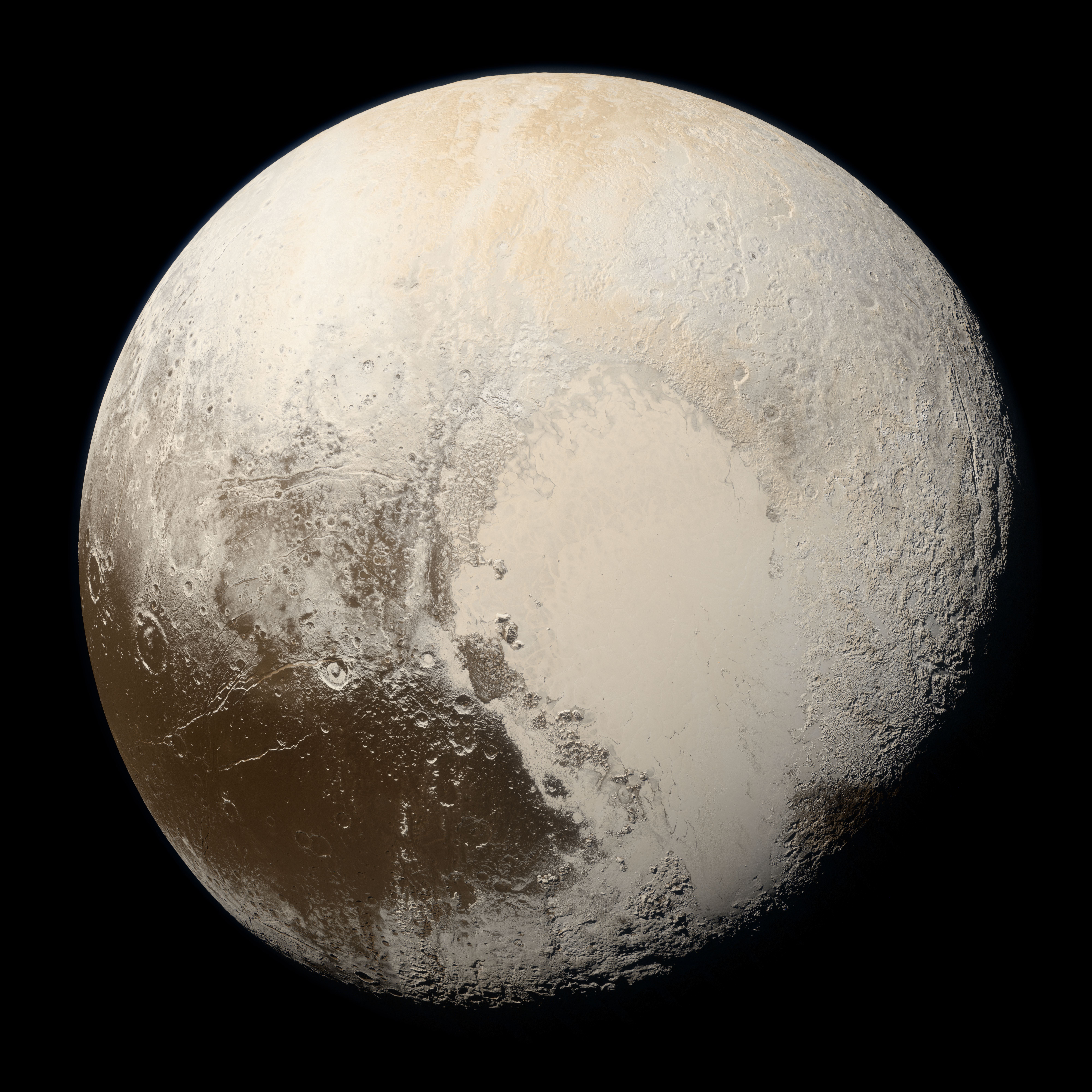Table of Contents
The Icy Realm Beyond Neptune
The Kuiper Belt is a crucial part of the solar system, serving as a vast reservoir of frozen objects that have remained largely unchanged since the early stages of planetary formation. Extending from roughly 30 to 55 astronomical units (AU) beyond Neptune, this region contains icy bodies composed of methane, ammonia, and water ice. Among its most notable inhabitants is Pluto, once classified as the ninth planet before being redefined as a dwarf planet in 2006. Other significant Kuiper Belt Objects (KBOs) include Eris, Makemake, and Haumea, all of which contribute to our understanding of planetary evolution. Scientists believe that many short-period comets, such as Halley’s Comet, originate here before being perturbed into the inner solar system.
Because the Kuiper Belt remains largely untouched by external forces, it preserves vital clues about the conditions that existed during the formation of the outer planets. Unlike the inner asteroid belt, which consists mainly of rocky debris, this region is rich in volatile compounds that provide insights into the solar system’s primordial chemistry. Missions like NASA’s New Horizons, which flew past Pluto in 2015 and later encountered the KBO Arrokoth, have revealed surprising geological activity and complex surface compositions. As technology advances, further exploration of this distant frontier could offer deeper revelations about the building blocks of planets and the broader processes of planetary system development.
The Origins of a Groundbreaking Hypothesis
The Kuiper Belt was first proposed as a potential region of icy bodies beyond Neptune long before it was confirmed by direct observation. In the 1930s, astronomer Frederick C. Leonard speculated that a collection of small, frozen objects might exist in this distant part of the solar system. Around the same time, Gerard Kuiper suggested that a belt of such objects could have formed early in the solar system’s history, though he believed it had largely dissipated due to planetary gravitational influences. Despite this, the idea persisted as astronomers sought to explain the origins of short-period comets, which seemed to require a closer source than the distant Oort Cloud.
By the 1950s and 1960s, researchers increasingly supported the idea that an undiscovered region beyond Neptune could be responsible for these comets. In 1980, astronomers like Julio Fernández and Martin Duncan conducted calculations that reinforced the need for a stable reservoir of icy objects to account for the movement and distribution of known short-period comets. Their work provided a foundation for future observational searches. The Kuiper Belt was finally confirmed in 1992 when David Jewitt and Jane Luu discovered 1992 QB1, marking the first direct evidence of this long-hypothesized region.
The Breakthrough Discovery of a New Solar System Region
The Kuiper Belt was first confirmed through direct observation in 1992 when astronomers David Jewitt and Jane Luu discovered 1992 QB1, a small trans-Neptunian object (TNO). This groundbreaking find validated decades of theoretical predictions that a population of icy bodies must exist beyond Neptune. Prior to this discovery, scientists could only infer the presence of such objects based on the behavior of short-period comets. Following the identification of 1992 QB1, telescopic surveys rapidly expanded the known population of these distant bodies, now called Kuiper Belt Objects (KBOs). Their composition, largely consisting of frozen water, methane, and other volatiles, suggested that they were primordial remnants of the early solar system.
The discovery of numerous KBOs further reinforced the idea that Pluto, long considered the ninth planet, was simply one of many large objects within this region. By 2006, the International Astronomical Union (IAU) reclassified Pluto as a dwarf planet, highlighting its similarity to other sizable KBOs like Eris and Makemake. Advances in observational technology, particularly the Hubble Space Telescope and high-powered ground-based telescopes with adaptive optics, have allowed scientists to study these objects in greater detail. The Kuiper Belt continues to be an area of significant interest, with ongoing research revealing the diversity and complexity of its icy inhabitants.
The Diverse Structure of the Kuiper Belt
The Kuiper Belt is a complex region with distinct subpopulations that vary in orbital characteristics and stability. The classical Kuiper Belt consists of objects with nearly circular orbits that remain undisturbed over long timescales, making them some of the most stable bodies in this region. These objects are believed to have formed in their current locations, unlike other Kuiper Belt populations that have been influenced by planetary migration. In contrast, scattered disk objects have highly elliptical and inclined orbits, indicating past gravitational interactions with Neptune. These objects are more dynamically active and can be perturbed into the inner solar system, potentially becoming short-period comets. Their unpredictable trajectories suggest that they continue to be shaped by Neptune’s influence.
Another key group within the Kuiper Belt is the resonant objects, which have orbits synchronized with Neptune in specific ratios. Pluto, for example, is in a 3:2 resonance, meaning it completes two orbits around the Sun for every three Neptune completes. This orbital resonance prevents close encounters and stabilizes Pluto’s long-term trajectory. The composition of KBOs reveals a mixture of frozen water, methane, nitrogen, and other volatiles, providing a glimpse into the materials that existed during the early solar system’s formation. Since these objects remain largely unchanged over billions of years, they offer valuable insights into the primordial conditions of planetary evolution.
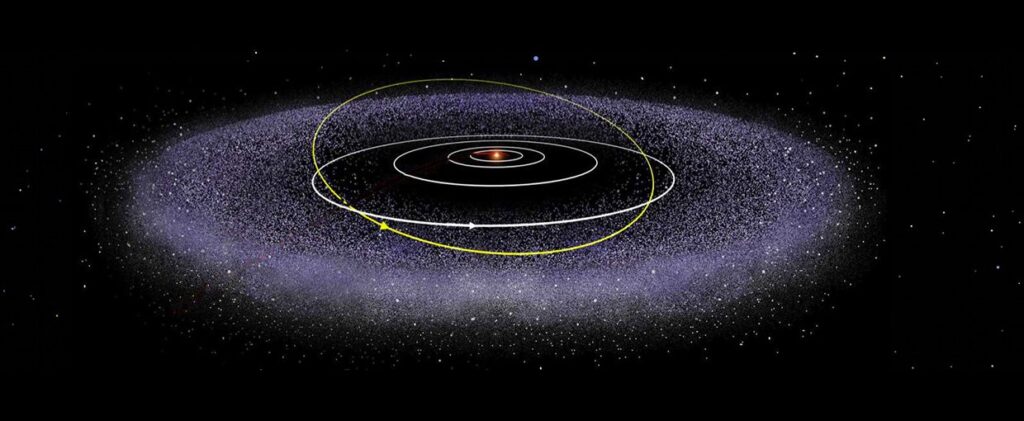
Pluto’s Role in Redefining the Kuiper Belt
Pluto’s status in the solar system changed dramatically when astronomers discovered other Kuiper Belt Objects (KBOs) of similar size, prompting its reclassification as a dwarf planet in 2006. Previously thought to be a unique planetary body, Pluto was found to be part of a larger population of icy objects beyond Neptune. This revelation reshaped scientific understanding of the outer solar system and led to the creation of a new planetary classification. Pluto shares many characteristics with other KBOs, including its icy composition and irregular orbit. The discovery of Eris, a slightly smaller but more massive object, played a crucial role in forcing the reevaluation of what defines a planet.
Despite its reclassification, Pluto remains one of the most well-studied members of the Kuiper Belt, providing key insights into this distant region. Its largest moon, Charon, is believed to have formed from a massive collision, similar to how Earth’s Moon was created. Pluto’s 3:2 resonance with Neptune ensures that the two bodies never collide, maintaining a stable orbital relationship. The New Horizons spacecraft’s 2015 flyby of Pluto revealed surprising geological complexity, including nitrogen glaciers, towering ice mountains, and a dynamic atmosphere. These discoveries highlight the importance of studying Pluto as a window into the history and evolution of the Kuiper Belt.
New Horizons: A Groundbreaking Mission
NASA’s New Horizons mission marked a historic milestone in space exploration by providing the first close-up view of Pluto and its surroundings. The spacecraft, launched in 2006, reached Pluto in 2015, revealing an unexpectedly complex world with towering ice mountains, flowing nitrogen glaciers, and possible subsurface oceans. These findings reshaped our understanding of Pluto’s geological activity and its place within the Kuiper Belt. The spacecraft’s high-resolution images showed a surprisingly young surface, suggesting active geological processes. The detection of a thin atmosphere and atmospheric haze also raised questions about how such a small, distant body maintains its dynamic environment despite extreme cold and low solar energy.
After its Pluto flyby, New Horizons ventured deeper into the Kuiper Belt, making history again in 2019 when it encountered Arrokoth, a contact binary object. Arrokoth, formed by two smaller bodies merging gently, provided scientists with a glimpse into the early solar system’s accretion processes. Unlike planets, which formed through violent collisions, Arrokoth’s structure suggests a more gradual and delicate assembly. The mission’s data confirmed that Kuiper Belt objects remain largely unchanged since their formation, making them invaluable in studying the solar system’s origins. As New Horizons continues its journey, it may uncover more insights into the ancient materials and processes that shaped the outer solar system.
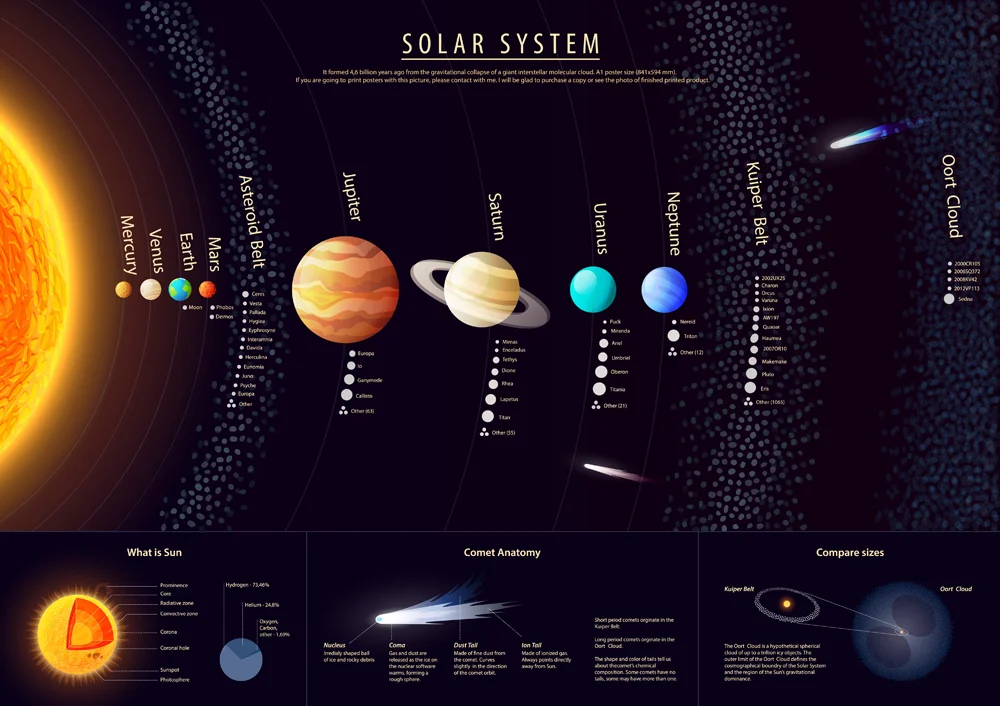
The Kuiper Belt as a Comet Reservoir
The Kuiper Belt serves as the primary source of short-period comets, which complete their orbits around the Sun in fewer than 200 years. Unlike long-period comets from the distant Oort Cloud, which take thousands of years to return, these comets originate from the icy remnants of the early solar system. Halley’s Comet, one of the most famous short-period comets, is believed to have come from this region before being influenced by Jupiter’s gravity. These comets are composed of volatile materials such as water ice, methane, and carbon dioxide, which vaporize when they approach the Sun, forming their iconic glowing tails and coma, allowing scientists to study their composition.
Because short-period comets preserve primordial materials, they offer invaluable insights into the chemical makeup of the early solar system. Space missions like ESA’s Rosetta, which visited Comet 67P/Churyumov–Gerasimenko, have confirmed the presence of organic molecules and complex carbon-based compounds, reinforcing the theory that comets may have played a role in delivering essential ingredients for life to Earth. By studying these Kuiper Belt-derived comets, researchers gain a better understanding of planetary formation and the distribution of water and organic compounds throughout the solar system, providing crucial evidence for the processes that shaped both terrestrial and outer planetary bodies.
The Kuiper Belt’s Influence on Planetary Migration
The Kuiper Belt has played a critical role in shaping the structure of the solar system, particularly during the early stages of planetary formation. According to the widely accepted Nice Model, the movement of giant planets, especially Neptune, had a profound impact on Kuiper Belt Objects (KBOs). As Neptune migrated outward, its gravitational interactions scattered many KBOs into highly eccentric orbits, sending some into the inner solar system while ejecting others entirely. This process influenced the distribution of debris and small bodies across the solar system. Jupiter’s gravitational pull also played a role by either capturing or expelling objects, contributing to the formation of the current planetary arrangement.
Beyond influencing planetary orbits, the Kuiper Belt may have played a role in delivering key ingredients for life to Earth. Some scientists suggest that scattered KBOs carried water-rich and organic compound-laden materials to the inner planets through collisions. Evidence from meteorites and cometary studies indicates that early Earth could have received a portion of its water from these icy bodies. Additionally, the presence of complex carbon molecules in comets supports the idea that organic material from the outer solar system contributed to prebiotic chemistry. Studying the Kuiper Belt helps scientists understand how planetary migration and material exchange shaped the development of habitable environments.
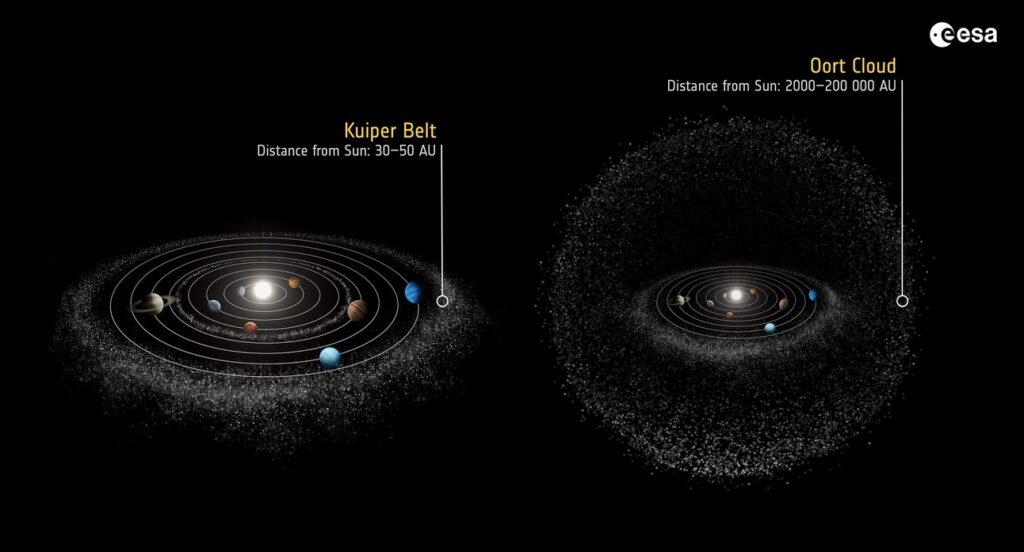
Key Differences Between the Kuiper Belt and the Oort Cloud
The Kuiper Belt and the Oort Cloud are both reservoirs of icy bodies, but they differ significantly in their structure, location, and influence on the solar system. The Kuiper Belt lies relatively close, extending from 30 to 55 AU beyond Neptune, and is shaped like a flattened disk. In contrast, the Oort Cloud is a hypothetical spherical shell surrounding the solar system, stretching from around 2,000 to possibly 100,000 AU. While the Kuiper Belt consists of dwarf planets and smaller icy objects that follow relatively stable orbits, the Oort Cloud is thought to contain loosely bound icy bodies that can be perturbed into long, unpredictable trajectories by gravitational interactions with passing stars or galactic tides.
Another major distinction lies in the types of comets these regions produce. The Kuiper Belt is the source of short-period comets, such as Halley’s Comet, which take fewer than 200 years to orbit the Sun. In contrast, the Oort Cloud supplies long-period comets, like Comet Hale-Bopp, which can take thousands or even millions of years to complete one orbit. Understanding the differences between these two regions provides insight into the history of the solar system, including the migration of planets, the distribution of primordial material, and the influence of external galactic forces on the Sun’s gravitational domain.
Expanding Exploration of the Kuiper Belt
The Kuiper Belt remains one of the least explored regions of the solar system, and future missions aim to change that by deploying advanced spacecraft to study its icy bodies in greater detail. While New Horizons provided a groundbreaking first look, scientists hope to send orbiters or even landers to Kuiper Belt Objects (KBOs) to analyze their surface features, internal structures, and chemical compositions. NASA and the European Space Agency (ESA) are evaluating next-generation missions that could use improved propulsion systems and cutting-edge instruments. These missions would allow for prolonged study, helping to determine how these distant objects formed and how their compositions have remained preserved over billions of years.
One of the most exciting scientific objectives is the search for prebiotic chemistry in the Kuiper Belt. Many KBOs contain frozen water, methane, and organic compounds—elements that could provide insight into the chemical conditions that existed during the early solar system. By examining these materials, researchers hope to understand whether the building blocks of life were distributed to the inner planets by comets and icy bodies. Missions capable of analyzing isotopic ratios and surface interactions could reveal how KBOs evolved, shedding light on planetary formation processes and the potential for organic material throughout the solar system.
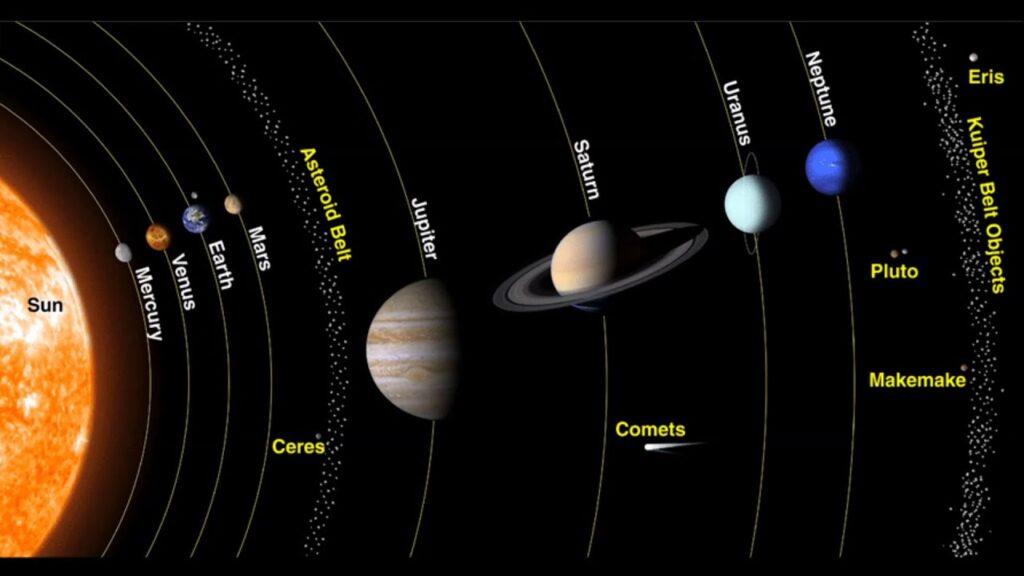
The Difficulties of Exploring the Kuiper Belt
Studying the Kuiper Belt presents significant challenges due to its immense distance from Earth and the small size of its objects. Located beyond Neptune at 30 to 55 astronomical units (AU), the region is too far for most telescopes to observe in detail. Even powerful instruments like the James Webb Space Telescope (JWST) can only detect the largest Kuiper Belt Objects (KBOs), making comprehensive mapping difficult. The small size of most KBOs, often less than a few hundred kilometers across, makes them incredibly faint and hard to detect. Their slow movement across the sky further complicates tracking efforts, requiring long observation periods and advanced data processing techniques to confirm their existence and trajectories.
Even when objects are identified, sending spacecraft to explore the Kuiper Belt remains highly complex and costly. The vast distances require extended travel times, with current propulsion technology taking decades to reach this distant frontier. Additionally, the extreme cold—often below -220°C—poses significant challenges for spacecraft instruments, which must be designed to function with limited solar power. Data transmission is another obstacle, as signals from this region take hours to reach Earth. Despite these difficulties, missions like New Horizons have demonstrated that detailed exploration is possible, paving the way for future advancements in Kuiper Belt research.
Unlocking the Secrets of the Kuiper Belt
The Kuiper Belt is a vital region for understanding the formation and evolution of the solar system. As a reservoir of icy bodies that have remained largely unchanged for billions of years, it offers scientists a unique opportunity to study the raw materials that contributed to planetary development. By analyzing Kuiper Belt Objects (KBOs), researchers can uncover clues about the composition of the early solar nebula and the processes that led to the formation of planets. Discoveries such as Pluto’s geological activity and the pristine nature of Arrokoth highlight the diversity of this region and its potential to reshape our understanding of how planetary systems evolve over time.
Ongoing and future exploration efforts will continue to expand our knowledge of the Kuiper Belt and its role in the broader cosmic picture. Missions like New Horizons have already provided valuable insights, but more advanced spacecraft will be needed to further investigate surface compositions, internal structures, and potential organic compounds on KBOs. As technology advances, improved telescopes and interstellar probes may unlock even more mysteries of this frozen frontier. By studying the Kuiper Belt in greater detail, scientists will deepen their understanding of the solar system’s history and its connection to planetary formation throughout the universe.
How useful was this post?
Click on a star to rate it!
Average rating / 5. Vote count:
No votes so far! Be the first to rate this post.
Author
-
Meet Dr. Kendall Gregory, a highly accomplished professional with a remarkable academic background and a deep passion for empowering individuals through knowledge. Dr. Gregory’s educational journey began with a Bachelor of Science degree, followed by a Doctor of Chiropractic Medicine, focusing on diagnosing and treating musculoskeletal conditions. He further expanded his expertise with a Master's degree in Oriental Medicine, specializing in acupuncture and Chinese herbology, and a Master's degree in Health Care Administration, emphasizing his dedication to improving healthcare systems. Dr. Gregory combines his extensive knowledge and practical experience to provide comprehensive and integrative healthcare solutions. Through his writings, he aims to inspire individuals to take charge of their health and make informed decisions.
View all posts






